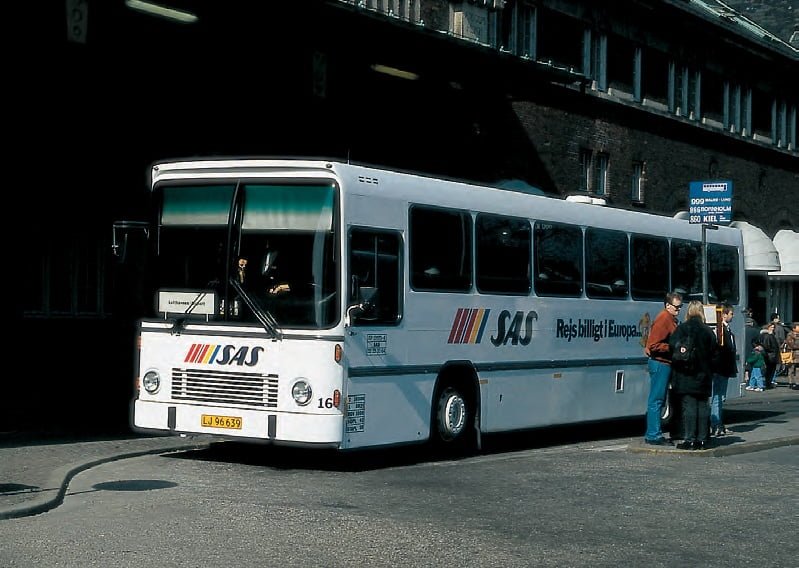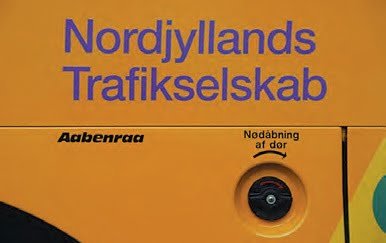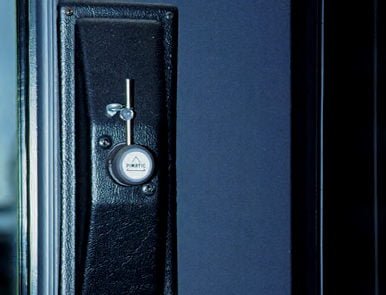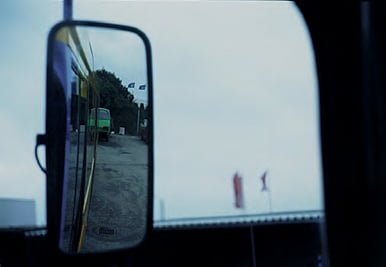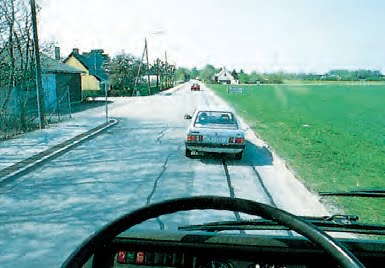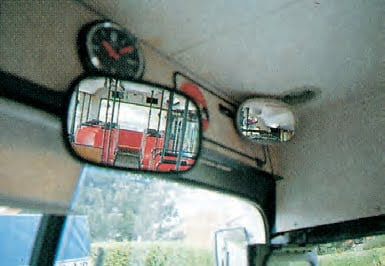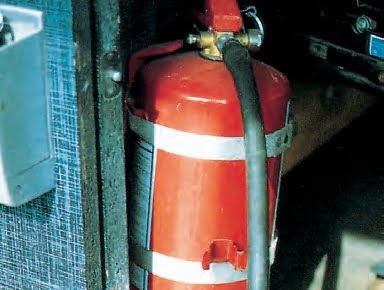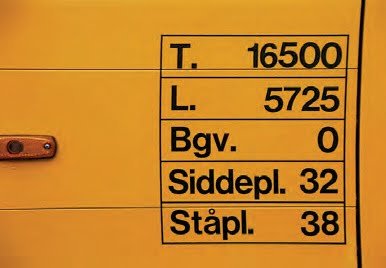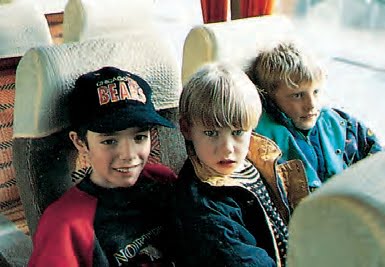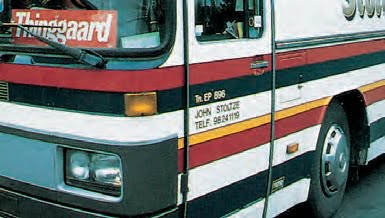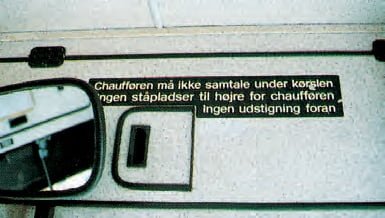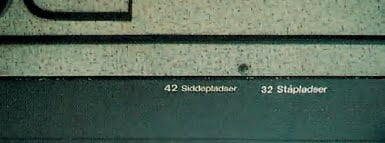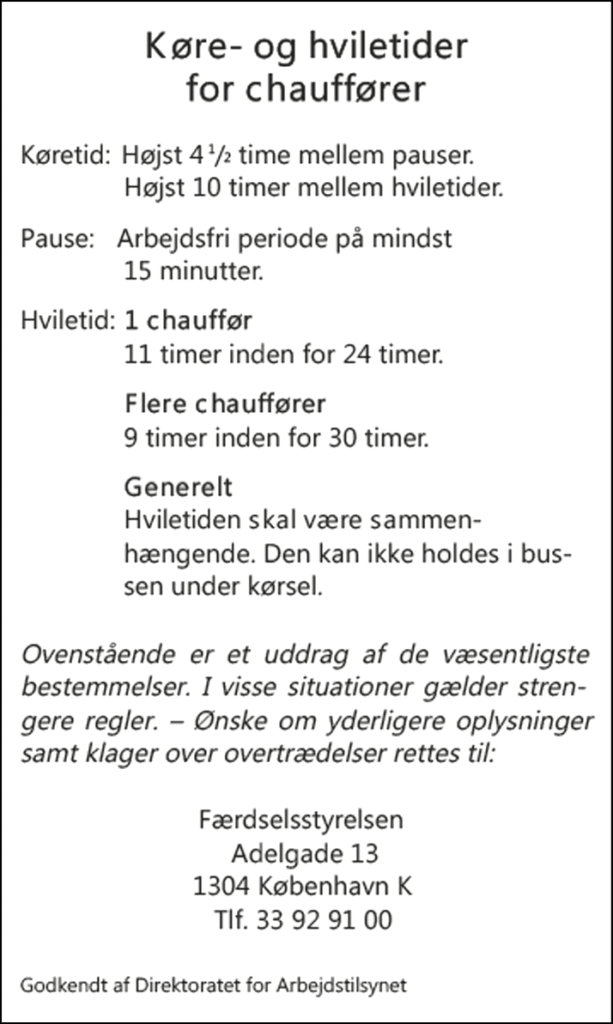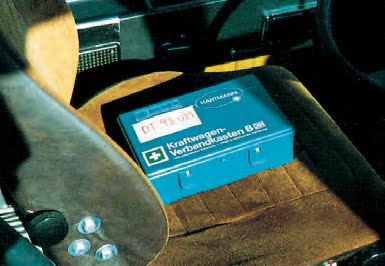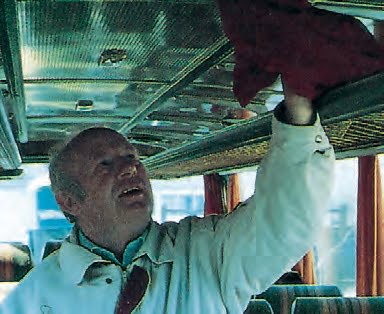large cars
Driving school
theory book
for category C - D - C/E - D/E
Large cars and lorries
Bus - Category D.
Keep in mind when acquiring the EP card.
That there is in-depth knowledge of:
- Danish Road Traffic Authority order no. 11 of 5 January 2005.
- Executive Order no. 700 of 8 August 2003, last amended by Executive Order no. 1342 of 15 December 2004.
See new announcements under www.fstyr.dk - click on laws and go to Danish laws and then look under bus legislation.
1. Special provisions for buses
Bus is a passenger car that is designed to carry more than 9 people, including the driver.
Bus layout and equipment
Buses with a gross vehicle weight of more than 3.5 tonnes may have an advertising or destination sign above the windscreen (destination: destination).
Outputs
A bus must have a number of exits on each side for which special design, functional and dimensional requirements are required. The number of exits must correspond to the authorised number of passengers so that they can easily exit the bus in the event of an accident.
Exits can be exit doors (normal exit and entry doors), emergency exit doors, emergency exit windows, or roof hatches.
A bus must have an exit in the rear (e.g. the rear window designed as an emergency exit window). However, this can be replaced by a roof hatch, provided that there are exits on both sides as close to the rear as possible.
Every passenger must have access to the mandatory exits, which may be blocked by the seat(s) if they can be folded away, for example. In the case of automatic doors, there must be a device on both the outside and inside that disables the automatic system so that the door can be opened manually. The same requirement applies to any lifting device (passenger lift).
Automatically operated service doors that are not directly visible from the driver's seat shall be capable of being monitored by means of mirrors or television equipment and by a signalling device that signals until the doors are fully closed.
Emergency exits must be clearly marked on the outside and inside with "emergency exit" or a standardised emergency exit symbol. If necessary, there must be operating instructions. The same requirement for labelling and operation also applies to any lifting device.
Tools for breaking the glass of an emergency exit window should always be close by.
(Tap/click on the images to see them in full size.)
Driver visibility
Windscreens must be kept clean. It must be possible to keep the windscreen clean with wipers and washers. It must be possible to keep the windscreen and the front side windows free of fog, e.g. by electric heating or with a hot air blower (defroster) or, in the case of side windows, as double glazing. There must be no objects in the driver's field of vision that unnecessarily impair visibility.
Mirrors
Buses must be equipped with a rear-view mirror on each side. On a bus or coach designed to carry more than 19 passengers, it must be possible to keep the right-hand rear-view mirror free of fog when heated.
Fire extinguisher
There must be at least one approved fire extinguisher near the driver's seat.
Inscriptions
On each side of the bus, next to the driver's seat, there must be a sign that states:
- Permissible total weight (T).
- Permissible load (L).
- Baggage weight allowance (kg).
- Permissible number of passengers divided into seated and standing passengers
People and luggage
Persons and goods must be positioned so that the driver has a clear view and sufficient room to manoeuvre the bus. There must not be so many people on the bus and they must not be positioned in such a way that it is dangerous for themselves and others. If luggage (bicycles or the like) is placed at the back of the bus and covers the lights, number plate, etc.
Passenger numbers
The bus may not be used to transport more people than it is authorised for. The rule that children under 4 years of age do not count towards the number of passengers, as well as the rule for older children where 3 children make up for 2 adults, has generally been cancelled. For buses with seat belts fitted, special rules apply to the number and positioning of passengers.
Commercial bus
In the case of a commercial bus licence, you must also be able to account for these things:
The inscription must be in a colour that clearly differs from the colour of the bus and must be in letters and numbers at least 4 cm high. The labelling must be directly on the bus body and must not be on removable signs or similar.
Signs and labelling in the bus
The interior of buses and coaches used for commercial passenger transport must be labelled or signposted:
1. prohibition for the driver to talk to passengers while driving.
2. the maximum authorised number of passengers divided into seated and standing areas.
3. Marking of emergency exits.
4. notices about driving and rest periods.
In buses and coaches used for tourist and charter services or for regular services where the length of the route, including any ferry crossing, is at least 150 kilometres, there must be a notice or sign with an approved content in a place visible to passengers stating the rules for drivers' driving and rest periods, including in the case of driving where several drivers take part in the journey and relieve each other, as well as the possibilities for complaints in the event of violation of the rules.
Emergency first aid kit/course
Buses it is used for
- Coach and private hire services, or
- Route driving where the length of the route (including ferry crossing) is at least 150 km must carry a first aid kit.
Expulsion of passengers
Passengers who do not comply with applicable regulations or who do not have or do not wish to purchase a ticket may be expelled. The same applies to passengers whose behaviour is a significant nuisance to other passengers.
Special conditions
In order to use a bus as a sleeper bus, it must be equipped for this purpose and be authorised by a vehicle inspection company. Some buses for regular services must be equipped with a lifting device for wheelchair users.
a) The standard length for BUS is 13.5 metres.
BUS with more than 2 axles can have a length of up to 15 metres. Articulated bus 18.75 metres.
b) The listed lengths include any ski boxes or similar.
Certificate of registration
- When travelling by bus used for business purposes, the bus registration certificate must be brought along.
- When travelling with a trailer, you must always bring both the bus and trailer registration certificate.
- When travelling abroad, you must bring the original certificates or a copy issued by a motor vehicle registration office.
When travelling in Denmark, copies can be brought along.
Test your knowledge
Cat. C - D - C/E - D/E - Bus
Select the questions you think are the right ones.
